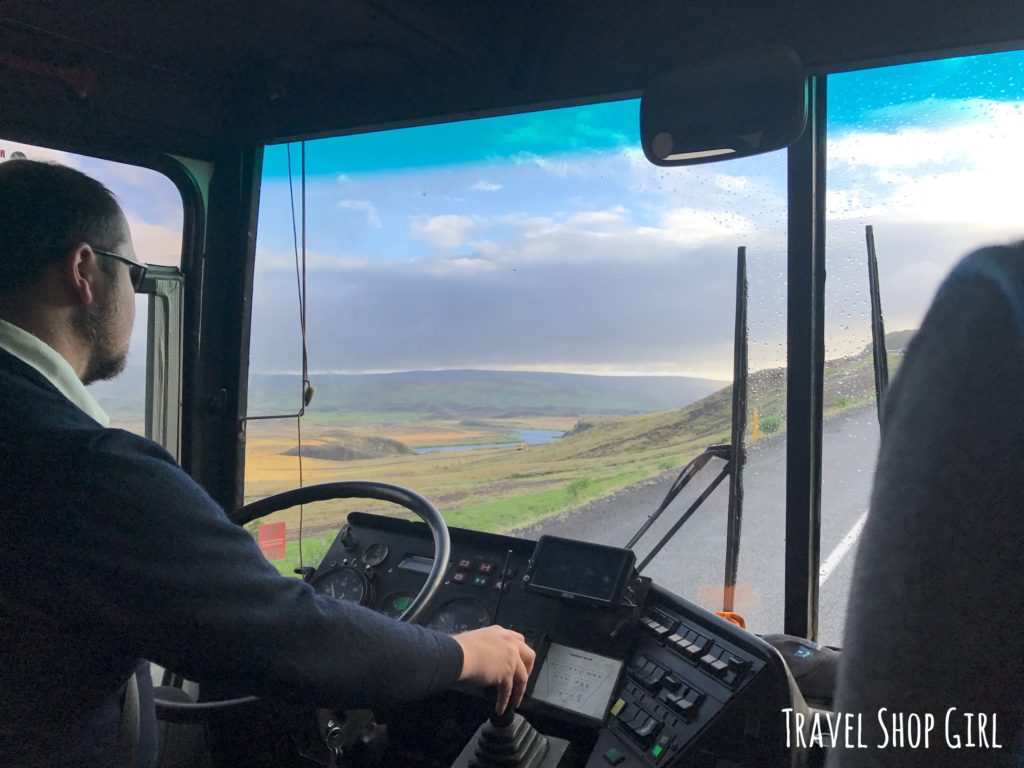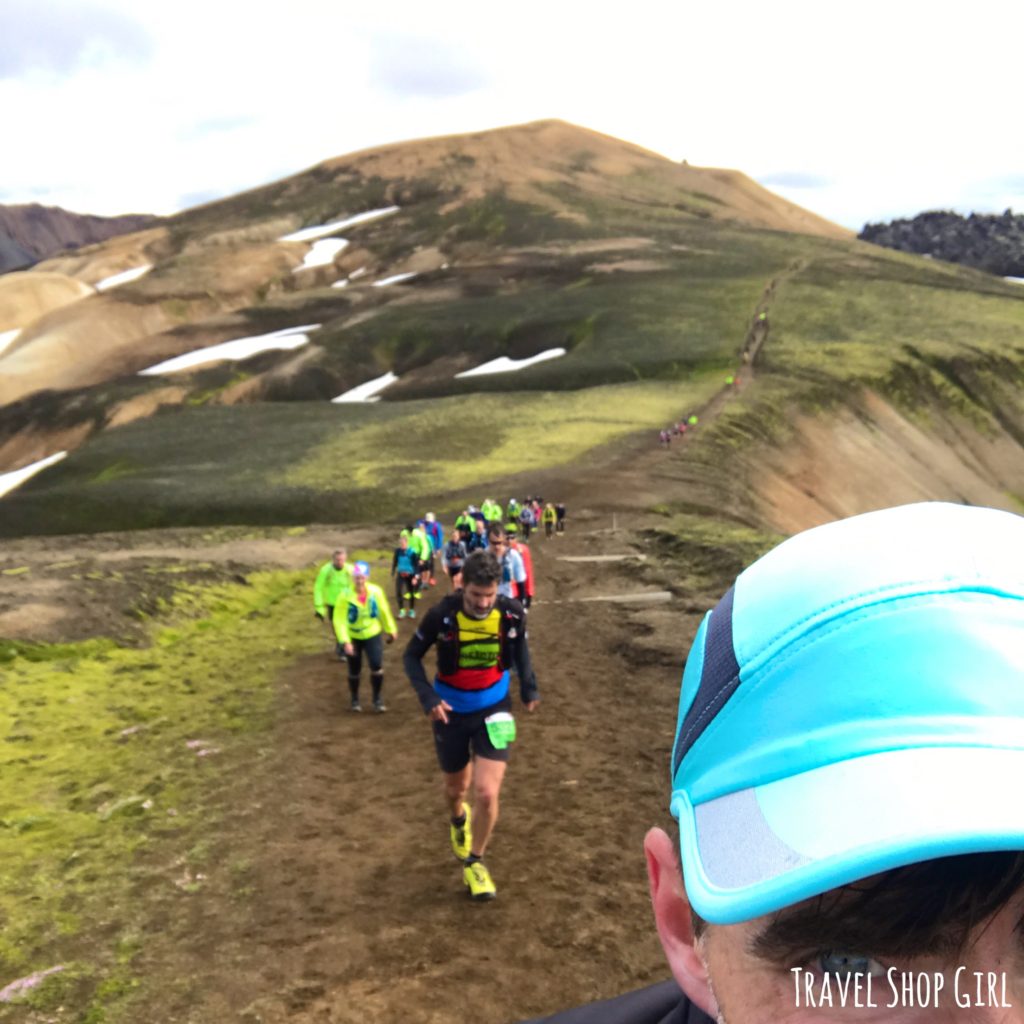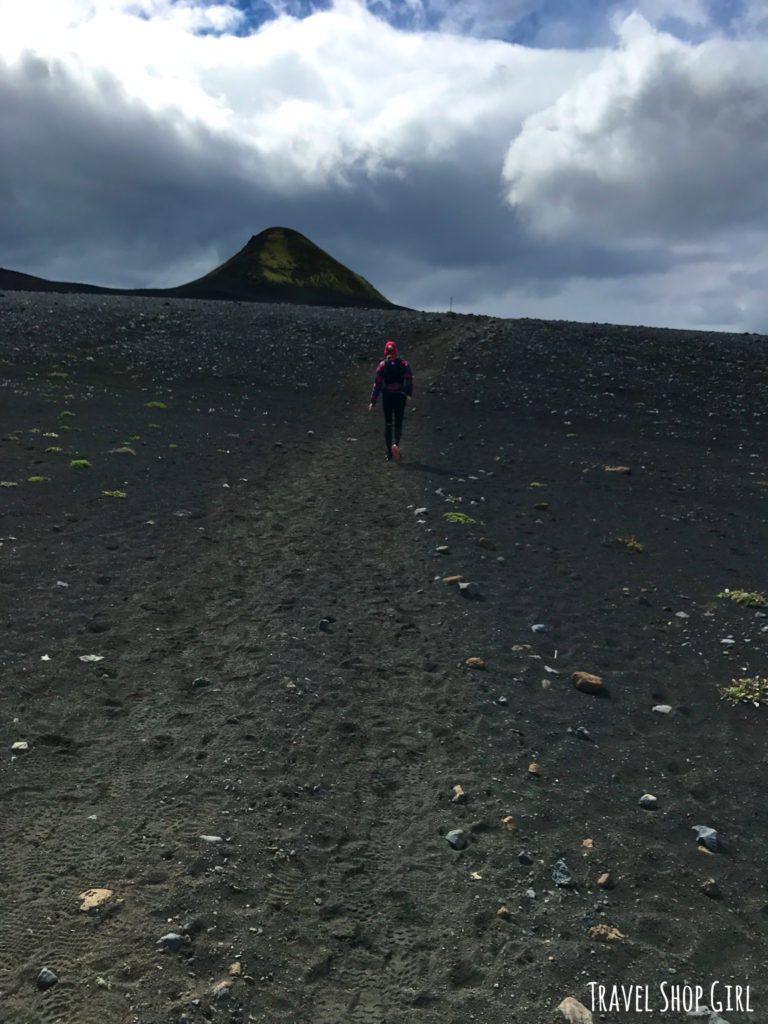
This is a guest post by Mr. TSG for the Travel Shop Girl website.
In my ongoing quest to seek out new adventures and fill my need to run longer distances, I decided to register for the 2017 Laugavegur Ultra Marathon in Iceland. Ultramarathons are defined as any race (road or trail) greater than 26.2 miles and may extend to distances of over 100 miles. It obviously isn’t recommended to run an ultramarathon if you suffer from pain in your feet or lower body in general, if you have flat feet like some I know, running can become strained and painful over periods of time, click here to look into running shoes for those with flat feet.

The race organizers arranged for buses to take us to the starting line from Reykjavik. This meant we had to be on the coach ready to leave Reykjavik at 4:30 am.

Luckily, as it was summertime in Iceland, it meant that there was plenty of sun for the scenic bus ride up.


The Laugavegur Ultra Marathon is a 55 kilometer (34 mile) race and seemed like a reasonable first venture into the world of ultramarathon running given I had only run traditional road marathons previously. What I didn’t expect was the “trail” component of the race. You’ll see more of that to come in the pics that follow.


The Laugavegur Ultra Marathon starts in Landmannalaugar at the base of a mountainous region where large areas of tents are set for those planning to hike the trail.

With something like six coaches dropping runners off at the start, the porta potty lines grew quickly.


With 488 runners in the Laugavegur Ultra Marathon, this meant there was quite a few people waiting at the starting area.
The race was supposed to start at 9 am, but it started a little late due to a flat tire on my coach bus. There are four groups of runners that are staggered by 5-minute intervals at the start.


When the moment the race begins, you’re faced with an immediate climb up various slopes with all of the runners in your group attempting to funnel through narrow terrain.

Throughout the race, we encountered hot springs and sulfur geysers. That smell at times was overpowering.

This was my attempt at taking a selfie while running and doing my best not to drop my phone.

Here I am again about a mile later on a nice flat stretch early on in the race.

Here’s the start of another incline and people are already getting fatigued as you can see with the telltale hands on thighs.

How do you describe the views during this race? Check out the running path along the top of these hills.



The hills were relentless and often times you were forced to walk and sometimes even climb on all fours.

From blue skies, the weather quickly changed to rain and sleet. Overall, we ended up running through about 6 miles of snow.





The first 10 miles were all the seasons wrapped into one. We had snow, rain, wind, and surprisingly, bright sunlight, although the warmth was lacking until the second half of the race.

The incline of the first 6 miles paralleled the decline in the overall conditions for running (ground surface and weather). The decline from the highest point saw the regression of snow and mud and the arrival of the rocky steep mountainous terrain with abrupt small inclines and steep downhills.


The first aid station in Hrafntinnusker was located at 1100 meters above sea level. Did I mention that the last 3 miles up to and 3 miles away from this aid station involved running in the snow? Yes, trail running is far different than conventional road courses I had enjoyed in the past.
This was the point in the race where I was in absolute awe of where I was standing looking off in the distance at Lake Álftavatn.Click To Tweet
This was the point in the race where I was in absolute awe of where I was standing looking off in the distance at Lake Álftavatn.



The next major goal of the race was to reach the aid station in Álftavatn (approximately 13.6 miles) before the 4 hour cutoff.



Doing essentially a half-marathon in under 4 hours may not sound like much to someone that runs the distance regularly but the conditions made this a difficult goal for some to obtain on race day.

Next was the first major river crossing in Blafjakallakvist. Yes, river crossing! This required walking through waist deep ice cold water while holding onto a rope with both hands to keep from having the current sweep you away. This ice cold water is melted ice from an ice cold glacier.

With this marking the halfway point of the Laugavegur Ultra Marathon, runners were allowed to access a prepacked bag to change clothing and grab supplies. I was so wet and tired of wearing my winter running clothing (given the flat warmer region of the race was next to come), I stripped down to my underwear with no concern about modesty and gladly changed into clean and dry running gear with new sneakers.
After eating a massive birthday cake flavored protein bar, I started back on the course with the goal of getting to Emstur (23.6 miles) before the 6 hour cutoff.



The course changed its appearance to at times resemble what I assume Mars looks like. The terrain was rocky and the volcanic sand gave the sensation that you were putting in more work with each step than you were reaping actual benefit.

At the aid station in Emstur I was greeted by other weary runners as we huddled around the food table. The organizers arranged food for the runners to include portions of candy bars, cinnamon buns, bananas, and pretzels. After nearly 5 hours of running at that point, this menu seemed like heaven to me compared to the conventional runner’s gel packs and gummies I had on hand.
Once I hit the 4 and 6 hour checkpoints with time to spare, I knew I would finish, but at the 6 hour checkpoint I wasn’t sure if I would be crawling to the finish or running. Luckily, I started talking at the checkpoint with another runner experiencing the same fatigue I was. We shared some brief stories from the race and decided to continue our conversation as we left the 6 hour checkpoint together. We helped pull each other through to the end of the race by talking and distracting ourselves from the discomfort and exhaustion we were both experiencing. We ran with the intent of simply making it from one aid station or landmark to the next and tried not to worry about the distance to the finish line until we were about 3 miles out.
The remainder of the Laugavegur Ultra Marathon involved 7.5 miles of rolling hills to the final river crossing (again ice cold and waist high) in Pronga. At this point in the race I found myself enjoying the experience and talking to fellow runners to help pass the miles.

After the final ice water challenge, the remaining 2.5 miles seemed like an easy jog through the Icelandic meadows to the finish line in Husadalur Thorsmork to finally see a waiting Ms. TSG at the finish line.
The collective experience reinforced that combining two of your passions, for me that being running and traveling, can be incredibly rewarding.Click To Tweet
Of course, as I often do after a long race, I swore I would never do an ultra marathon again. However, after I had time to recover and look back at the pictures, I started to realize how special the experience was and longed to take on another trail ultra and maybe even the Laugavegur Ultra Marathon again. It seems inappropriate to refer to it as a “race” because it didn’t feel like people were that concerned about where they placed as they finished. The collective experience reinforced that combining two of your passions, for me that being running and traveling, can be incredibly rewarding.

Some tips for anyone thinking about running the Laugavegur Ultra Marathon:
1. Enjoy the experience! Your time and finishing position in a race like this is irrelevant. Don’t let the stress of performance get in the way.
2. Carry the least you can and use the aid stations for fluids and food. Putting an extra couple of pounds of supplies on your body for a race like this takes a toll on you. For the race I packed 2 gels and multiple small Health Warrior Chia bars. I came to my senses prior to the race and decided to use the aid stations for hydration and food rather than carry it on me and take on extra weight. The chia bars were perfect because I tend to have a sensitive stomach late in the race and I tolerated these well.
Stop and take pictures. This race was about the experience and not so much the time.Click To Tweet3. Stop and take pictures. This race was about the experience and not so much the time. I wanted to remember it once it was over with these pics. I loved the view from one of the high points looking down on Lake Álftavatn before the super steep rocky downhills. It felt like I was looking at a painting. It was absolutely stunning to see and I can still envision it when I close my eyes
4. Take advantage of the mid-race opportunity to change your entire outfit. The full change of clothing gave me a huge boost and was worth the loss of time although only about 10 minutes.
5. Which brings me to this. Although the weather conditions sound like I was under dressed, I actually would have gone without a running jacket if I do it again. I started to sweat on the incline run, which then never evaporated and made made me cold and wet on the outside and inside. The sweat then made my clothing heavier, which in turn made me work harder during this challenging portion of the terrain.
6. Things I would have done differently: I would have carried only one small water bottle, not two, and I would have gone without a jacket. During the run I would have taken the rocky downhills slower to minimize the wear and tear I experienced with my ankles later in the race.
My philosophy about running the race: You're most likely not going to win so just enjoy the experience for what it is. Click To Tweet7. My philosophy about running the race: You’re most likely not going to win so just enjoy the experience for what it is. Try not to get hurt. Don’t get frustrated by seeing people pass you at any point in the race. Save your energy for the final 1/3 of the race.

8. Talk to your fellow runners! I’m passionate about running and when I find people that share my point of view I like hearing their perspectives and stories. I’ve stopped being the grumpy runner that ignores others and obsesses about running form and finishing time. I’m still competitive, but I have more perspective with each race. This is a unique experience that is to be remembered and enjoyed.
In the end, I’d say that this experience was a once in a lifetime opportunity and I would encourage anyone considering running an ultramarathon to consider running the Laugavegur Ultra Marathon in Iceland.
While you’re here, browse through some of the running posts or travel tips Iceland posts.




Nice post! I’m considering running this race as my first ultra in 2020.
One thing I was concerned about – is the trail clearly marked the whole way?
Hi Rebekah,
Yes it is — good luck!
What size of running vest would you recommend?
Lindsey,
You should definitely try them on in the store as sizes vary depending on the manufacturer.